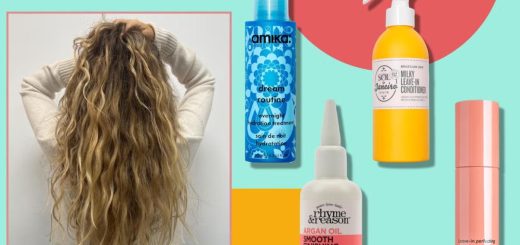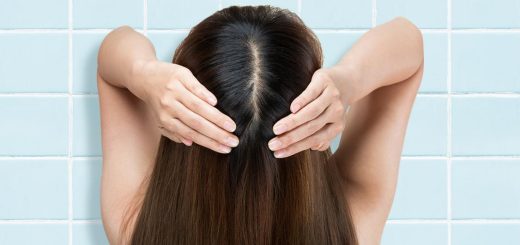Understanding and Addressing Hair Loss: Causes, Recognition, and Solutions
Hair loss can be a distressing experience for many, affecting self-esteem and overall confidence. Whether it’s a gradual thinning or sudden shedding, understanding the causes and exploring effective solutions is crucial for managing and potentially reversing the condition. In this comprehensive guide, we delve into the various causes of hair loss, how to recognize them, and the steps you can take to cope with and treat this common issue.
Common Causes of Hair Loss
- Genetics and Heredity
The most prevalent cause of hair loss is genetic predisposition, commonly referred to as androgenetic alopecia or pattern baldness. This hereditary condition affects both men and women, leading to gradual thinning of the hair on the scalp. For men, it typically starts with receding hairlines and thinning at the crown, while women usually experience diffuse thinning over the entire scalp. - Hormonal Changes
Hormonal fluctuations can lead to significant hair loss. For women, conditions like pregnancy, menopause, and the use of birth control pills can cause temporary or permanent hair loss. Menopause, in particular, reduces estrogen levels, which may contribute to thinning hair. Additionally, conditions such as polycystic ovary syndrome (PCOS) can lead to elevated levels of androgens, causing hair thinning. - Medical Conditions
Several medical conditions can impact hair growth. Thyroid disorders, such as hypothyroidism or hyperthyroidism, can disrupt the normal hair growth cycle. Autoimmune diseases like alopecia areata, where the immune system attacks hair follicles, can also cause patchy hair loss. Infections of the scalp, such as ringworm, can damage the hair and lead to hair loss. - Medications and Treatments
Certain medications and treatments may have hair loss as a side effect. Chemotherapy drugs, used to treat cancer, are well-known for causing significant hair loss. Other medications, including those used for arthritis, depression, and high blood pressure, may also contribute to hair shedding. Always consult your doctor about potential side effects of prescribed medications. - Nutritional Deficiencies
Poor nutrition can affect hair health, leading to hair loss. Deficiencies in essential nutrients like iron, zinc, vitamin D, and biotin can disrupt the hair growth cycle. An imbalanced diet lacking in these nutrients can result in brittle hair and increased shedding. - Stress and Lifestyle Factors
Physical or emotional stress can trigger a type of hair loss known as telogen effluvium, where a significant amount of hair enters the shedding phase prematurely. Chronic stress, poor sleep, and unhealthy lifestyle choices such as smoking and excessive alcohol consumption can exacerbate hair loss. - Hair Care Practices
Overuse of hairstyling products, excessive heat from hair dryers and straighteners, and tight hairstyles like braids or ponytails can cause hair breakage and loss. Using harsh chemicals in hair treatments, such as dyes and perms, can also weaken hair and lead to damage.
Recognizing Hair Loss
Identifying the type and cause of hair loss is essential for effective treatment. Here are some signs to look for:
- Gradual Thinning: In genetic hair loss, the thinning usually starts at the hairline or crown and progresses slowly over time.
- Patchy Loss: Sudden, patchy hair loss may indicate conditions like alopecia areata or fungal infections.
- Excessive Shedding: Increased hair fall in the shower or on your pillow may point to telogen effluvium or stress-related shedding.
- Visible Scalp: Noticeable thinning or an increase in the visibility of your scalp through your hair could signal a deficiency or genetic issue.
Solutions and Treatments
Addressing hair loss effectively involves a combination of medical treatments, lifestyle changes, and natural remedies. Here are some strategies:
- Medical Treatments
- Medications: Minoxidil (Rogaine) and finasteride (Propecia) are FDA-approved treatments for hair loss. Minoxidil helps stimulate hair growth, while finasteride works by inhibiting the hormone responsible for hair loss.
- Hormone Therapy: For women experiencing hormonal-related hair loss, hormone replacement therapy (HRT) or other hormonal treatments may help balance levels and reduce shedding.
- Platelet-Rich Plasma (PRP): This therapy involves injecting a concentration of platelets derived from your blood into the scalp to promote hair growth.
- Lifestyle and Diet Adjustments
- Balanced Diet: Ensure you’re getting adequate nutrients by including iron-rich foods, lean proteins, and vitamins essential for hair health. Incorporate foods such as leafy greens, nuts, seeds, and fish.
- Stress Management: Practice stress-reducing techniques such as meditation, yoga, or regular exercise to help minimize hair loss caused by stress.
- Gentle Hair Care: Use mild shampoos and conditioners, avoid excessive heat styling, and minimize the use of harsh chemical treatments. Opt for hairstyles that do not pull tightly on the hair.
- Natural Remedies
- Essential Oils: Oils like rosemary, peppermint, and lavender have been found to promote hair growth and improve scalp health. Massage these oils into your scalp to stimulate circulation.
- Aloe Vera: Known for its soothing properties, aloe vera can help reduce scalp inflammation and promote hair growth. Apply fresh aloe vera gel directly to your scalp and leave it on for 30 minutes before rinsing.
- Saw Palmetto: This herbal supplement is thought to inhibit the action of DHT, a hormone involved in hair loss. Consult with a healthcare provider before starting any new supplement.
- Consult a Professional
If hair loss persists or worsens despite home remedies and lifestyle changes, seeking advice from a dermatologist or a trichologist is recommended. They can conduct a thorough evaluation, including blood tests and scalp analysis, to determine the underlying cause and recommend appropriate treatments.
Conclusion
Hair loss, while common, can be managed effectively with a clear understanding of its causes and solutions. By recognizing the signs and seeking appropriate treatments, you can take proactive steps to address hair loss and restore your confidence. Whether through medical interventions, lifestyle changes, or natural remedies, there are numerous options available to help you cope with and combat hair loss.


















